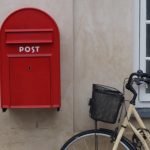When developing the curriculum to support students learning we need to be very conscious about the context in which it is taught. For many students with ASD and an intellectual disability, learning concepts and ideas in a vacuum is nonsensical.
Mapping in Built and Natural Environment – Bedlam Adventures Unit of Work
It is very hard for ASD students to see how all the detail comes together to create the ‘big picture’ (think about central coherence). Generalising their learning outside of the immediate learning experience can be tricky and so it is important that we consciously plan for how we need to best support this.
Motivating students by ensuring content has relevance to them and their lives is also an important consideration, and this is exactly the approach that was taken to the Bedlam Adventures unit of work for the key learning area HSIE/Geography. Students used a familiar walking route in their local environment, using a range of built and natural landmarks, to create a tactile map. The use of a visual google map with dynamic elements and GPS tracking and live maps on devices to support the students emerging understanding of mapping which was further developed when students collected remnants from each of the landmarks, then used these to represent places on their own map. This group of students’ learning benefited greatly from repetition and routine and so new elements were introduced into the sequence incrementally. An example of the program (based on outcomes from the old NSW Syllabus), a forewarning resource, labelling activity and some video modelling snippets are included in the resource section on this page.
Depending on the learning edge of your students, you could fit so many more variations and extensions on mapping within this unit and further explore the differences and similarities in built and natural environments. Have fun!
How to collect sand








